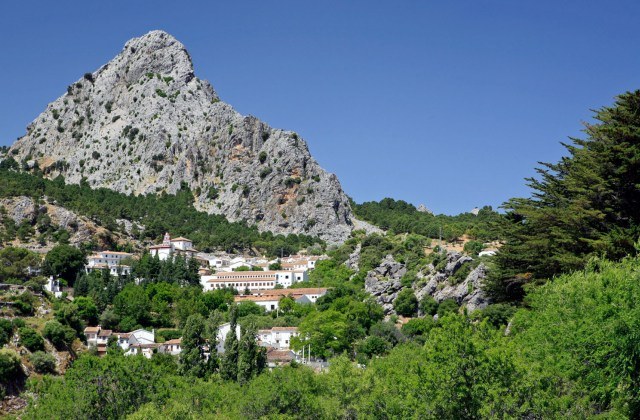In recent years, the Slow Travel movement – a variation of the Slow philosophy – has won over new fans and earned an increasing number of tourism projects dedicated to it, especially in Europe. We will discuss the origins of the movement, including the characteristics of this new way of travelling, as well how you can apply it to a visit to Grazalema and its surroundings under the ideals of Slow.
Principals:
It all began with Slow Food, founded in 1986 by Carlo Petrini in Italy, stemming from a protest at the opening of a McDonald’s location in the Piazza di Spagna in Rome. The movement, which is known as “comida lenta” in Spanish, is opposed to the standardisation of taste, emphasising a new philosophy that combines knowledge and pleasure of regional culinary traditions and values, local products and farming methods. Today, the efforts has grown into an international movement in over 50 countries, with over 80 thousand members.
Slow Motion:
From there, the original Slow Food ideology expanded beyond its borders to spur new Slow movements – a cultural current that promotes calm, human activity. In 1997, again in Italy, a variation of the theme emerged with the Cittaslow (Slow City), which called for the improvement in the quality of life in cities, supporting cultural diversity and resisting homogenisation.
Slow Travel:
This variation of the Slow philosophy is based on travelling slowly, but surely, finding the small details of each place you visit while integrating yourself with the local people and their customs.
We’ll leave you today with 7 key points of the philosophy and suggestions of how you can apply them on a trip to Grazalema.
1. Use Non-Motorised Vehicles
When walking, you can travel from the Hotel Fuerte Grazalema to the town of Grazalema along a pleasant trail of just under 2.5 km. The trail begins next to the hotel’s herb garden, runs down a passing land beside a charming Roman bridge, crossing farms and corrals before ending in an final climb to the town on an ancient Roman road. You can download the route on the Wikiloc Website here.
2. Eat and Buy local products
In addition to enjoying the excellent cuisine, using locally sourced and seasonal ingredients, you can make a stop at Grazalema’s traditional bakeries, including Narvaez (Empedrada Street , 54) to sample its bread, oil cakes and almond butter, as well as cups and other handicrafts. You should also remember to see and sample the famous local cheeses of Parque, including Payoyo and Bosqueño.
3. Get to Know Local Traditions
Witness the livestock at the nearby Francis Garcia farm, where enterprising women work to sustain traditions many generations old in defence of a rural practises linked to farming and the countryside. Or, you can get to know the cork manufacturing process at the Cork Interpretation Centre (get to know more about those two activities at the hotel reception).
4. Experience the Local Language
If you are not Spanish, you should set aside some time to get to know the local language, learn a few phrases and acclimate your ears to the unique accent of the Andalucian Sierra. Always keep a dictionary on hand and try reading a local paper, including the Diario de Cádiz, for example.
5. Do What The Locals Do
The best way to do this is to take part in some of the local festivals. On the city council’s Website, you can check the calendar of local festivals. The closest festivity is held in the small towns of the Sierra de Grazalema Natural Park. The II Livestock Festival of Benaocaz will be held from the 10th to the 13th of October.
6. Savour the Coffee Culture
Sitting in one of the bars or cafes that surround Grazalema’s Plaza España, one can become part of the town’s landscape, not just an observer of the passersby. Spend an afternoon there and you’ll begin to feel the rhythm of the village and all of its inhabitants.
7. Get to Know the Old Footpaths and Historic Steps
The ancient Roman roads that connect the villages of the Sierra de Grazalema say a lot about how the villages once were. Don’t miss a walk along the irregular stones of the local roads and the stories they tell of the area’s rich history. The best preserved sections link Benaocaz and Urbique and those ascending to the town of Grazalema.
To learn more about Slow Travel philosophy :
